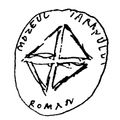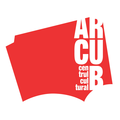Rock and Subversion in Communism

România Internațional, 29.07.2019, 12:25
Rock music in
Romania in the 1970s and the 1980s was a way of challenging mainstream music.
Some rock artists went even further, trying to challenge the very state of
affairs. A carry-over from Western culture in the mid-1960s, Romanian beat
music was shy in its early days, later on giving rise to rock. The official
music norm, subscribed to the regime’s cultural policy, was the so-called muzică
uşoară, which word for word means light music, a rough equivalent of the pop
of the time and which held pride of place in song contests such as The Golden
Stag or Mamaia. Bands like Pheonix, Sfinx, Timpuri Noi and artists like Dorin
Liviu Zaharia, Alexandru Andries, Mircea Florian and others tried to challenge official
music, which stifled freedom of expression and any contact with the music in
the West.
We talked to
Emil Ionescu, a Professor at the Faculty of Letters with the University of
Bucharest, about rock and subversion in the 1970-1980 period:
I was impressed by the
subversive topics and undertones of those who dabbled with this type of music
in order to stand out, to assert a separate identity opposed to the musicians
who dictated what the norm was. From this point of view, to me Romanian rock sent
out a strong liberal message, including at political level, embedded in a will
to subvert and challenge the establishment at the time. These things made a
difference, because, unlike poetry, which has a lower public appeal, music,
rock in particular, is capable of stimulating and influencing young people in
ideological terms. I believe music has a greater impact in that sense. I’m
talking about some of the works of the band Sfinx, such as ‘I am not afraid’
and ‘The Boys’ Circle Dance’. And then take a look at the band’s less
subversive songs, and ‘Cranes Flying in a Row’ inevitably springs to mind. To
me, the greatest symbol of subversive rock in the 1980s was the band Iris,
especially their song ‘The train without conductor’.
Subversion had
little possibilities, however, as artists were aware they were living under
communism, the crux of which were repression and genocide. They knew there were
limits they couldn’t cross. Emil Ionescu with more details:
It’s hard to ascertain what
these limits were, how the regime envisaged them. Obviously, the authorities
knew well the music that was being produced and performed. To me, that is
beyond a shadow of a doubt. What is very important is that the boys from Sfinx
and Iris, and Phoenix before them, were actually standing up against the regime
in their music. Sometimes their stand took on subversive tones, other times
their opposition was expressed overtly for everyone to hear. Phoenix opted for
the out-in-the-open approach, and their song ‘Mother, mother’ is evidence of
that. Everyone knew who the conductor in ‘The train without conductor’ was. ‘The boys’ circle dance’ is a camouflaged
means of challenging authority, disguised in Arghezi’s poem. Another one of
Sfinx’s songs, ‘We are not afraid’ is equally subtle and eloquent in this
respect.
Overall, to be
successful, a song had to have appealing music and lyrics. But to be able to
challenge communist reality, the lyrics had to above average. Emil Ionescu.
It was more important that
these subversive texts were turned into music. The moment you perform songs
like ‘Mother, mother’, ‘I’m still one of you’ and ‘The boys’ circle dance’ in a
club, the lyrics and the music create a bond between the artists and the
public. It is a personal bond with a set of values. The band Phoenix did not
reach the pinnacle of their artistic expression when their opposition was
strongest, on the contrary. This came later, when the band reinvented itself,
because they were no longer able to hold any concerts, they were banned
everywhere, on the radio and in community centers as well. They had to
reorganize themselves, and Serban Foarta’s genius lyrics breathed new life into
the band.
Phoenix was
considered one of the rebel rock bands, its members fleeing Romania in 1977.
They left behind ‘Cantafabule’, one of the best Romanian rock albums of all
times. There was a time, however, when the band stopped challenging mainstream
music, the years right before its departure. Emile Ionescu also referred to the
1980s, the gloomiest period of communist dictatorship:
The
masterpiece of Romanian rock music is not particularly one of my concerns.
Subversion appears with the opposition of well-established norms, the
ideological and music standards. Phoenix asserted a new identity. It was the
birth of Romanian ethno-rock, which would fashion an identity which the party
couldn’t challenge. The party could no longer ban them from performing their
songs. The songs spoke of the Middle Ages and fantastic beasts, and their music
which was both interesting and sophisticated, was a new genre altogether. The
world is terribly bleak in the 1980s, and this added to the subversive tones of
songs such as ‘Train without conductor’. This type of music in those years of
hardship was even more valuable. Doing what these boys did, at a time of
desolation when the prospect of a better life was nowhere in sight, was
something very special.
Rock and
subversion went hand in hand under communism in Romania, each with its
limitations, imposed or otherwise.





























